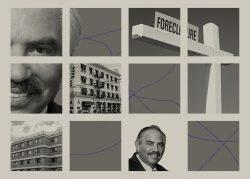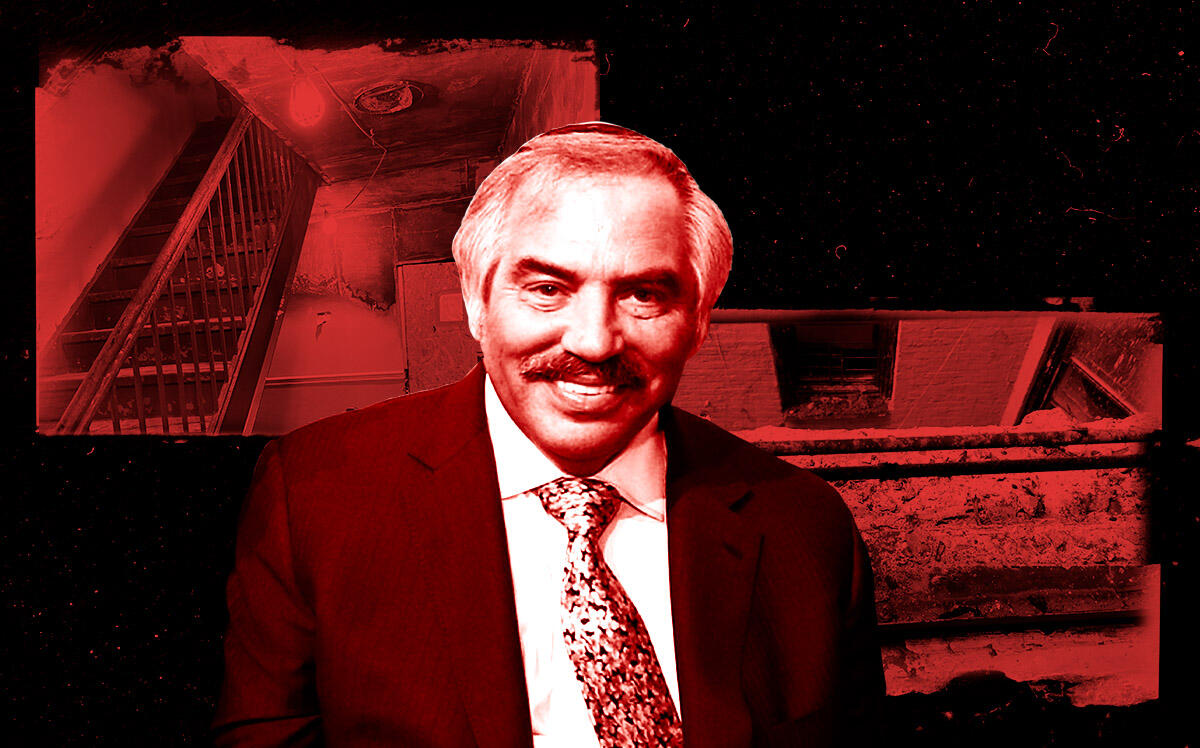 Multifamily giant Irving Langer pays off defaulted loan after selling properties
Multifamily giant Irving Langer pays off defaulted loan after selling properties
Trending
Burned-out tenants put heat on E&M’s Irving Langer
Some survivors of deadly Harlem blaze have been displaced for 7 months

In 2018, Irving Langer began to sell, sell, sell his Harlem holdings.
By the end of the next year, his multifamily giant E&M Associates had shed 92 buildings in three sales, raking in $400 million. In 2020, he took a stab at unloading the rest of his stake in E&M’s assets but hit some financial issues on the road to closing.
Now, one of the properties he got stuck with has been rocked by tragedy, litigation and rent problems.
Last November, a deadly fire tore through the five stories of 1833 Adam Clayton Powell Jr. Boulevard, a Harlem building steps from Central Park. The blaze killed three people, including a mother and her 4-year-old daughter.
After the smoke cleared, tenants found their building battered: ceilings collapsed, hallways scorched, windows blown out.
The city ordered 10 residents to vacate, deeming their units “imminently perilous to life,” court documents show. Some of the displaced landed in the shelter system.
The Department of Housing Preservation and Development gave the landlord just over two weeks to perform needed repairs, setting a Dec. 2 deadline. But months passed and the building sat in shambles.
Finally, on the last day of February, the tenants of 1833 Adam Clayton Powell Jr. Boulevard got to meet with the landlord, property manager Israel David and a host of city agencies.
Initially, that seemed to work: The landlord, Langer’s limited liability company Manhattanville Holdings, agreed to fix the damage. (Property records list a corporate entity associated with E&M Associates as the building’s most recent owner.)
But four months later, according to tenants, nothing has changed. The building still has 100 housing violations. Displaced residents say they have not been told when work might start.
One of them, Oaklin Davis, said building management’s only outreach to her has been rent notices slipped under the door of her uninhabitable apartment. The last one offered to renew her lease — with a rent hike of 1.5 percent.
This week, the tenants’ patience ran out.
Read more
 Multifamily giant Irving Langer pays off defaulted loan after selling properties
Multifamily giant Irving Langer pays off defaulted loan after selling properties
 Multifamily giant Irving Langer racing to refi 3K-unit portfolio
Multifamily giant Irving Langer racing to refi 3K-unit portfolio
 Irving Langer's E&M just sold off another big Harlem portfolio
Irving Langer's E&M just sold off another big Harlem portfolio
Mobilized by the advocacy group Tenants & Neighbors, they hit Langer with a double-whammy: a rent strike and a lawsuit.
The suit, categorized as an HP action, asks housing court to direct Manhattanville Holdings to remedy the property’s violations, including a broken elevator, melted floors, sparking outlets and missing or broken fire-protective equipment. It also demands reimbursement for tenants who had to find lodging elsewhere and pay damages to cover lost property.
The cause of the fire remains unknown, but the complaint by 16 tenants alleges that the landlord’s failure to keep fire safety equipment in good repair made it more severe.
HPD records show violations for missing smoke alarms and defective carbon monoxide detectors months before the fire broke out.
There’s also a lengthy history of unaddressed 311 complaints. Top issues include infestations and a mold problem fed by a ceiling leak.
“The mold situation is compounded by a well-documented failure of management to respond to repair requests and/or to perform repairs adequately,” said Sheena Morrison, the co-president of the building’s tenant association.
“When I needed a new refrigerator, management sent me a roach-infested replacement,” she added.
The rent strike and lawsuit are not likely to drive a speedy resolution. Housing court is backlogged following the end of the eviction moratorium and it’s unclear how much pressure the missing rent will put on Langer.
Neither Langer nor E&M Associates returned a request for comment.
However, court documents show the tenant association isn’t the only one going after the owner.
HPD filed a separate complaint in May over eight unaddressed Class C violations stemming from the fire. The suit requests a judgment of $150 for each infraction plus $125 for each day after the repair deadline that the violation remains unfixed.
Langer’s tab, by the agency’s count, is up to $36,000.




